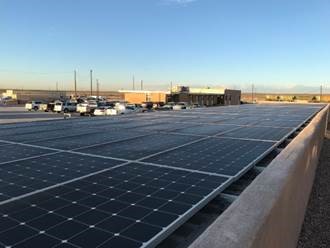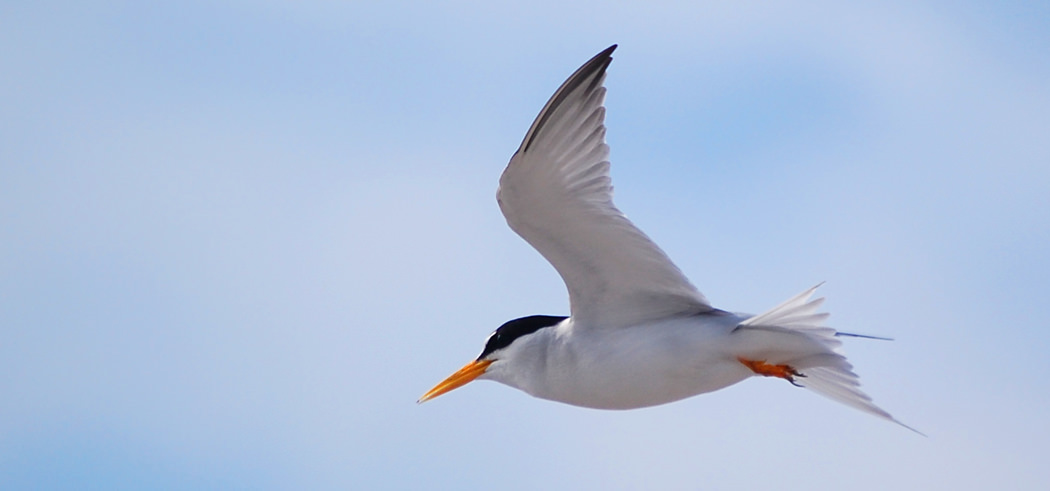Our Carlsbad, New Mexico, facility installed a solar array that produces approximately 63 MWh of electricity annually—enough to power the facility’s administrative building.
Being Stewards of The Environment
In 2017, we made respectable progress toward our energy and greenhouse gas (GHG) emissions targets while our water performance fell short. Click here to learn more about our performance.
Looking ahead, our current 2020 targets are no longer adequate long-term measures of our progress with the addition of major mines and production facilities in Brazil. We plan to issue new targets in 2019 that appropriately reflect the performance and ambitions of the entire company. Meanwhile, we continue to push for progress, striving for ongoing improvements in the areas that are most significant to our business and stakeholders.
As signatories to the United Nations Global Compact, we take environmental stewardship seriously. In 2015 we established targets to reduce greenhouse gas (GHG) emissions, as well as water and energy use, by 10 percent per unit of production by 2020.
Joc O'Rourke – President & CEO
Finding New Efficiencies
Throughout 2017 we have celebrated efforts to improve productivity and efficiency, and minimize energy use and emissions. Our Carlsbad, New Mexico, facility installed a solar array that produces approximately 63 MWh of electricity annually—enough to power the facility’s administrative building. Mosaic’s Fospar Port facility in Brazil also has a solar energy system that supplies energy to a portion of its operations.
Our efforts to reduce the environmental impact of our operations extend beyond our sustainability targets. In 2017 we initiated projects to replace catalysts at some of our concentrates facilities, which will reduce our emissions of SO2 by as much as 30 percent from our current permitted levels. The projected timeline for completion of these projects is well ahead of National Ambient Air Quality Standards compliance timelines.

Reclaiming Mined Land and Restoring Habitats
Our Reclamation team is comprised of biologists, ecologists, environmental engineers and other professionals. They apply innovative technologies and techniques to reclaim formerly mined land, help protect our native wildlife, improve our processes, and limit our impact on the environment.
Since 1975, Florida law has required that every acre of land mined for phosphate be reclaimed for productive uses. We collaborate with the regulatory agencies to ensure land reclamation meets or exceeds success criteria and ultimately improves the overall habitat quality and biological functions compared to pre-mining conditions. Once we satisfy all reclamation obligations, the regulatory agencies “release” those reclaimed acres. Learn more about Mosaic’s reclamation efforts.
Our Potash segment in Saskatchewan made a grant to Ducks Unlimited Canada for $2 million that will restore at least 500 wetlands in Saskatchewan’s Assiniboine River Major Basin over a 10-year period in Saskatchewan. To date, approximately 384 acres have been restored as part of this initiative.
2,000 acres
In 2017 Mosaic acquired release on more than 2,000 acres from the Department of Environmental Protection.
Putting Science to Work for Wildlife
As a global leader in reclamation ecology, we are pioneering new environmental approaches to create vital habitats and land uses for future generations. We protect and steward Florida’s native wildlife through the most advanced relocation techniques and prime habitat development. We work with local environmental groups to preserve and create thousands of acres of natural habitats for nearly 300 types of native wildlife. The legacy we are creating includes outstanding local and state parks on formerly mined land in Polk, Hillsborough, Hardee and Manatee counties. Community members now and in the future can fish, camp, bike, jog and play while observing the area’s abundant wildlife. Learn more about how Mosaic is putting science to work for generations to come.
650,000 trees
In 2017 we planted more than 650,000 trees as part of our reclamation efforts in Florida.
Creating Habitat to Promote Biodiversity
Our ecologists in Florida regularly see avian species like song birds, cranes, herons, osprey and bald eagles during the mining and reclamation processes, and lately they have observed more birds commonly associated with coastal areas of Florida. One species, the least tern, is attracted inland by the production of sand tailings material, which is used in our land reclamation process.
Least terns are listed by the Florida Fish and Wildlife Commission as a threatened species, and its populations are declining due to habitat development along Florida’s coastline and changing weather patterns. The least tern normally nests in open sandy areas near rivers or beaches, so it makes sense that they would be attracted to Mosaic’s tailings management areas—but since that sand is used in reclamation and eventually planted and returned to native wildlife habitat, it is only a temporary home for the birds.
After an increase in least tern sightings on formerly mined land, Mosaic’s reclamation ecology team piloted a project to study the least tern. Using sand leftover from the mining process, the team created permanent nesting island habitat for the birds. In 2017, four colonies of least terns nested in those areas, and ecologists observed approximately 60 active nests. The team banded several of the surviving chicks to track their activity and learn more about the least tern’s nesting behaviors. As of last year, banded juvenile least terns from the island were documented on three different Florida coastal areas, and as far as 65 miles away from the nesting site. The team is hopeful that its habitat efforts will contribute to the bird’s long-term conservation.

The Mosaic team created permanent nesting island habitat for the least tern.
LEARN MORE: View our 2017 Sustainability Disclosure & GRI Index to learn more about our sustainability progress.